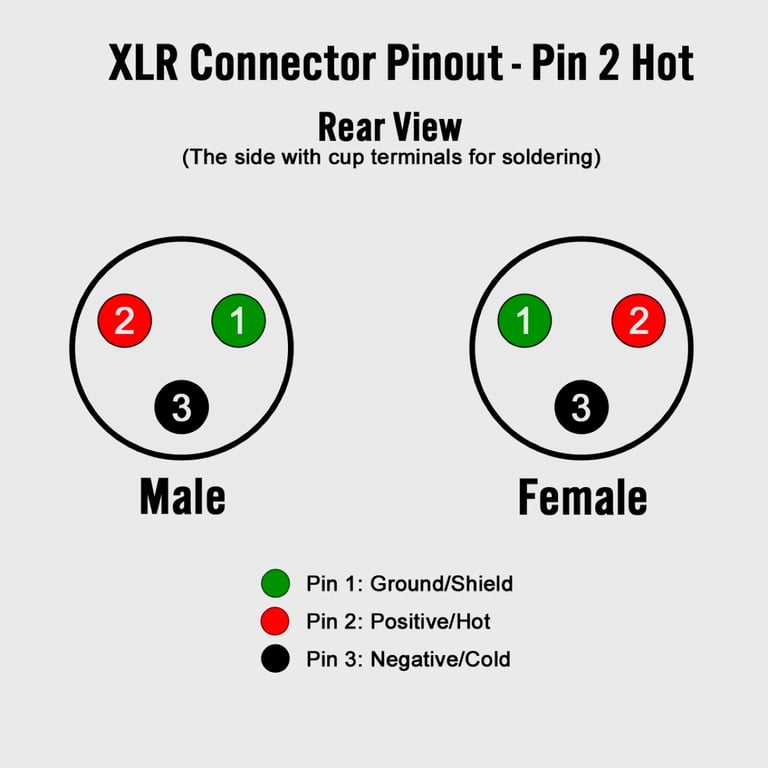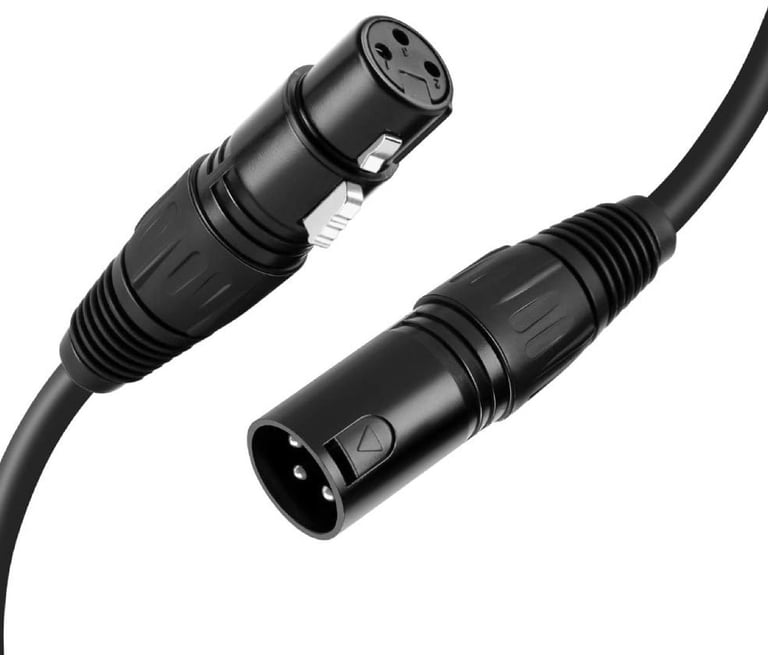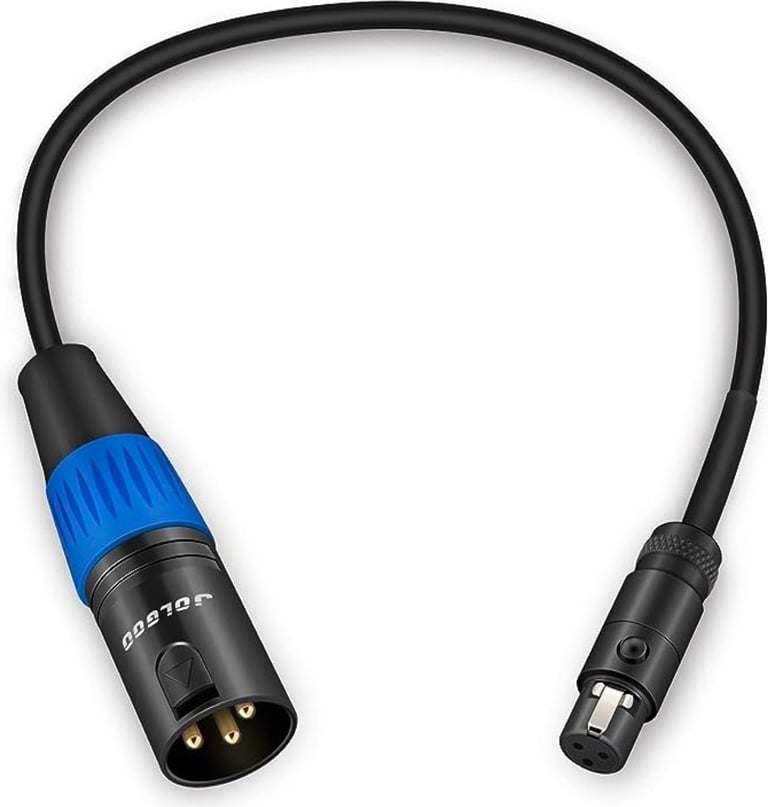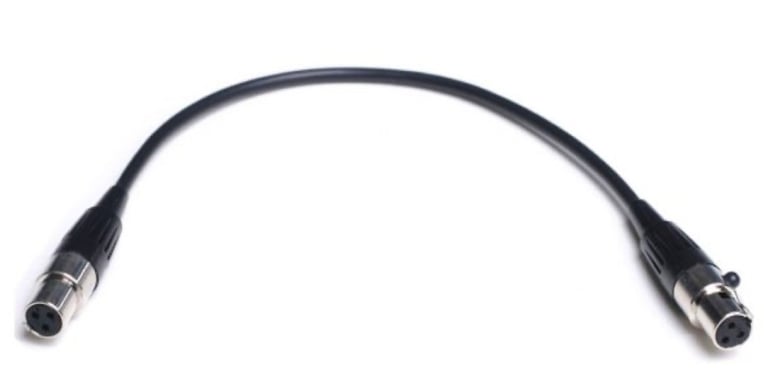
Understanding Audio Cables: A Beginner's Guide - Part 1
From XLR to TA, this comprehensive guide demystifies the cables that make your audio come alive. Whether you're a seasoned pro or a newbie, learn the ins and outs of audio cables used in the entertainment industry. Discover why XLR is the 'Granddaddy' of audio cables, what makes TA cables unique, and why knowing your cables is crucial for top-notch sound quality.
TIPSESSENTIALS
11/6/20236 min read


Cables carry electrical signals, and simply put, audio is an electrical signal created from an analog source. Once a microphone captures a sound it immediately turns that sound into an electrical signal for us to manipulate, transport and record. In the effort to keep this simple, I won’t be diving into the history of cables, or too much science. I’m going to highlight the basic connections we see in the field of film and television production, especially as it pertains to audio production. In this article I will not discuss additional, similar cables used outside of the film and television production industry.
First, we have the Granddaddy of all professional audio cables, the XLR. The XLR cable is a thick, robust and balanced cable that interlocks and is commonly used for plugging directly into microphones and other devices such as mixing consoles and cameras. Because of their interlocking ability, they create a strong connection to devices and to each other which makes them ideal for cable runs of 10 to 1000 feet.
XLR cables have 3 major components made up of 3 copper wires inside a conduit. These cables are very similar to common electrical cables in homes for anyone that’s ever installed a light switch or fan, or lamp fixture. One wire is hot (or positive), one is neutral, (or negative) and the last is grounded. Now, in XLR cables, the positive and neutral wires both carry audio signals and one of the signals is inverted. “What the heck does that mean?”… follow the balanced link above to help, or stay tuned for another article about the why and how. I can tell you the balanced signal is essential in longer runs to help eliminate the interference from outside signals the cables would pick up. Interference is typically from television and radio broadcast, but these days the impact of nearby cell phones are also a factor.
Since the XLR has an external 3 pin configuration, the XLR cable is a great visual example of what's inside the audio cables since the pins are a mirror image of the internal components. The wires inside and the pins outside are simply 1 hot, 1 neutral and 1 ground wire. The head's design is an interconnectable and interlocking 1 male and 1 female part. In the XLR cable, the signal flows out of the 3 pin male head and through the female 3 receptacle. For a simple illustration, microphones have male connections and mixing consoles or cameras have female connections to receive the microphone.


In Production, we’ll also have a 5 pin version of the XLR cable but the 3 components remain the same. There’s simply 2 hot wires, 2 neutral wires and they share 1 shared ground wire. This allows one cable to carry two audio paths in one conduit. Stereo analog microphones require the extra path, and some camera connections require a 5 pin connection to record 2 channels of audio to the camera. In my 30 year career, I’ve used a 5 pin connection only a handful of times but still, having a simple Y breakout cable where a male 5 pin breaks out into two 3 pin female XLRs is a good camera connection tool kit. Camera operators often don't consider audio in their builds so as a sound person, it may come in handy.
Lastly there’s the 4 XLR. The 4-pin is a power cable, used on sound carts, some of the older, old Denecke Timecode slates, and big-body broadcast and film cameras. My personal take on the 4 pin is that it’s being phased out for sound applications but will remain useful in the camera department for many years. While several sound carts may have this connection, it’s less expensive and more practical to use a simple rack mountable power strip. The one major advantage to the XLR power system is the interlocking but removable cable. It’s solid as a rock, yet completely removable.


Next, let’s step-down a size into the TA Cable. Some, including several retailers on Amazon call it the mini XLR, (pictured above alongside a male XLR head), but it’s not a nomenclature I agree and neither should anyone else. For sound people, there’s 4 common TA connections, TA2, TA3, TA4 and TA5. The number that follows TA indicates the number of pins/receptacles on the cable. The photo below shows a dual female TA3 which is the most common audio cable for audio signals in portable sound kits. The 3 pin configuration resembles the XLR cable, only it’s roughly ⅓ the size. The TA3 is a balanced cable that transports audio signals from one device to another, the most common being a wireless receiver to a sound mixer. These cables can carry analog, or digital audio signals.


Now, because we disagree with the nomenclature of mini XLR, we hate to continue to point out the obvious similarities but the TA5 cable primarily has the same purpose of a 5 pin XLR which is to carry two analog audio signals in one cable. These days dual path audio out of transmitters into mixers is the most common use. For now, many TA5 cables are 5 pins on one end that split to 2 TA3, or XLR cables on the other end of the cable to transport audio from the mixer to a dual transmitter, or from the dual receiver to 2 of the inputs of a mixer/camera. As we continue to move forward to the digital age of audio, TA3 cables will more commonly handle digital dual paths, but for now there is an analog compromise where the digital signal may transport back and forth between digital and analog. The Lectrosonics SR series has an optional digital plate, where one TA3 connection out of the SR Receiver connects to a single 3 pin input on a mixer or camera and carries both channels of audio. The layman's version of the how and why is simply that digital travels with less effort than analog and will require less copper to deliver the audio package.
The major point you need to take away here is to know your source and your destination because these cables will all start looking the same but have different purposes. So many changes are coming with digital transportation, but that’s for another article. For now, TA5 is primarily a stereo analog connection between devices. The one major exception to the rule is older analog, or digital hybrid transmitters from Lectrosonics. The TA5 input on a Lectro is a bit different and the wiring is very important. Some of the pins are for microphones, others are for instruments or very loud (line level) sources. Either way, the TA5 only delivers one path of audio to the transmitters, not dual. In the case of these cables, you need to know which pin is hot on your cable. The cable shop at Gotham Sound can help you find what you need.
Unlike XLR, TA cables are typically dual female, and devices such as mixers and cameras have male. There are exceptions to that rule where the camera has female parts. Early versions of Red cameras had female connectors and required male cables. The new BlackMagic 6K cameras also have female connectors.
The last 2 common TA cables are both power cables, the TA2 and TA4 are common power cables for audio, cameras, drones, and monitors. Sound Devices has switched from Hirose to TA4 with the introduction of their 8 series mixers, and the old Remote Audio BDS power distribution boxes also have a TA4 input.
For production audio, the XLR cable, and the TA cable carry the vast majority of audio to and from our devices, but there’s so much more to cover. TRS, BNC, Hirose and Lemo cables all play critical roles in audio production. We’ll cover those and more in Understanding Audio Cables: A Beginner's Guide - Part 2.
Get in touch
© 2025 Vandelay Sound Exports, Inc. • RETURN Policy • Privacy Policy • Terms and Conditions
